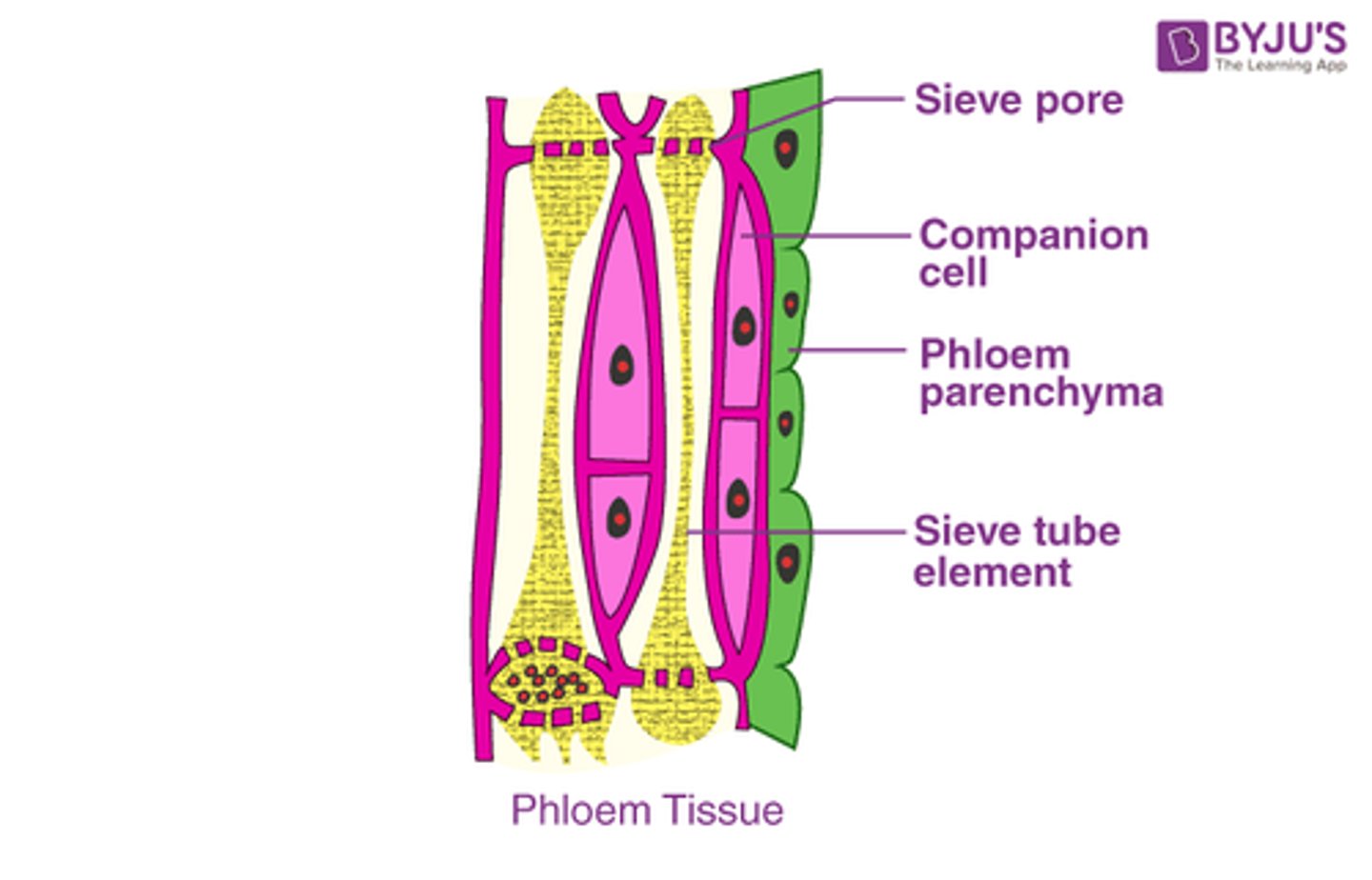translocation and mass flow experiments
1/17
There's no tags or description
Looks like no tags are added yet.
Name | Mastery | Learn | Test | Matching | Spaced |
|---|
No study sessions yet.
18 Terms
what is the function of the phloem tissues? (3)
transport organic substances from the leaves (source)
to the rest of the plant (sink)
by the process of translocation
describe the structure of the phloem tissues (3)
consists of sieve elements and companion cells
sieve elements are joined end to end to form sieve tubes
next to each sieve element is a companion cell with dense cytoplasm and many mitochondria

what is the function of companion cells? (1)
provides/produces ATP required for active transport of organic substances
what is the adaptation of sieve tubes? (1)
don’t contain any organelles to increase the area for mass flow
what is the source in translocation? (1)
the leaves
what is the sink in translocation? (1)
the roots / any actively growing or dividing tissue
describe the mass flow hypothesis for translocation (7)
in the source, sugars are actively transported into phloem
by companion cells
this lowers the water potential of the sieve tube
water enters by osmosis
this creates a high turgor pressure which causes mass movement towards roots
in the sink, sugars are being used up in respiration
which lowers the turgor pressure and the cycle continues
describe the process of translocation (6)
photosynthesis occurring in chloroplasts of leaves creates organic substances (e.g. sucrose)
sucrose is actively transported into the sieve tube element by companion cells
the increase of sucrose in the sieve tube decreases the water potential
water enters the sieve tube elements from the surrounding xylem by osmosis
the increase in water volume in the sieve tube element increases the hydrostatic pressure
this causes the liquid to be forced towards the sink
what is the ringing experiment used for? (1)
to show the transport in plants via the phloem
describe the use of ringing experiment to show transport in plants via the phloem (2)
involves removing a complete ring of phloem around the stem
preventing transport through the phloem at this point
what does swelling in the ringing experiment indicate? (3)
a build up of photosynthetic products from the leaf
which were prevented from being transported past the ring
due to the removal of the phloem
describe how you would use tracers to show the transport in plants via both the phloem and xylem (2)
radioactive substances are supplied to the leaf of a plant
after a while, you can use autoradiography to detect where the radioactive substances have moved
what radioactive substance is used to show transport in plants via xylem vessels? (1)
mineral ions
e.g. Na+
what radioactive substance is used to show transport in plants via phloem? (1)
carbon dioxide
how can you determine where the radioactive substances have moved? (2)
take thin horizontal sections of plant tissues/stem
carry out autoradiography by placing against photographic film in a dark room for several hours
what does autoradiography reveal about the action of phloem in plants? (2)
photosynthetic products are present in growing regions
which indicates translocation through the phloem
what are some evidences that support the mass flow hypothesis? (4)
cutting the stem of a plant results in phloem sap being released
indicating hydrostatic pressure in the sieve tubes
lowering the temperature or the use of respiratory inhibitors reduces the rate of translocation
indicating an active transport mechanism is involved
what are some evidences that are against the mass flow hypothesis? (4)
not all solutes move at the same speed
they should do if it is mass flow
in young phloem tissue, substances have been observed moving in opposite directions
in the same sieve tube